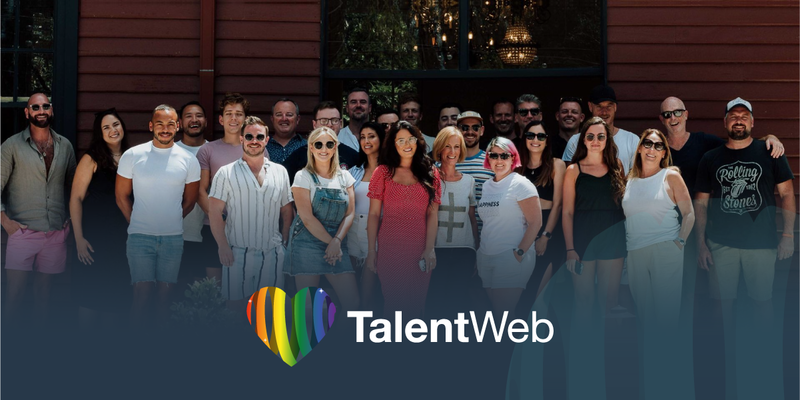Defining a Role to Secure Top Talent
When it comes time to fill a vacancy, many hiring managers are naturally keen to jump in. But there is a real advantage in taking a step back to gain a ‘bird’s eye’ view of the role. By spending some time doing a team evaluation and deeper role assessment, you’ll be able to create a…

January 5, 2024
When it comes time to fill a vacancy, many hiring managers are naturally keen to jump in. But there is a real advantage in taking a step back to gain a ‘bird’s eye’ view of the role. By spending some time doing a team evaluation and deeper role assessment, you’ll be able to create a complete brief that will exponentially increase your chances of securing the best fit.
Here, we share how to do this. Starting from the top of the recruitment pyramid and working down, you’ll uncover our key tips for defining a role to find someone who not only complements your current team and skill requirements, but will continue to be an asset to your business in the long term.
Review the Team
We help clients recruit new staff every single day – it is our bread and butter. Through decades of experience, we’ve learnt what works well and developed best practices in response.
The first of those centres on how to define a role by building a proper job brief. The initial step is to perform a team evaluation in relation to the role. Why do it? For the simple reason that teams are constantly evolving. Staff upskill, project parameters shift, duties reshuffle and all these things impact the role you’re recruiting for.
The following team evaluation tips will help you get started:
1.Balance the team makeup
One of the important things to consider when hiring an employee is the balance of the current team, particularly each person’s career stage. Ideally, a strong team features an amalgamation of experience levels – this gives you the advantage of both seasoned proficiency and fresh perspectives and ensures you have a continuous pipeline of talent.
Evaluate how each has progressed in their role within the greater team over the past few years, as this will influence who you choose to fill the new position. The goal is to strike a balance that incorporates people just starting out, people in the middle phase of working in their role, and perhaps a very experienced team member preparing to transition to their next career stage.
2.Recognise that team culture is sometimes different to company culture
We’ve often found that when a client describes their team culture, they’re really describing the company culture, but the two often aren’t the same thing. While company culture is underpinned by an overarching set of values, this can differ slightly from team to team, with each one having its own unique culture within the wider organisation.
Take some time to reflect on your team culture. Are things working well? Or is there scope for improvement? Think about where you are now, as well as where you want to be in the next one to three years.
These reflections will guide you towards the type of candidate your team culture actually needs, and will benefit from. Keep in mind that hiring for your team culture doesn’t mean hiring someone who’s an exact match for your current team – rather, it’s about bringing on people who both complement the culture and drive change where it’s needed.
Review the Role Over Time
The next step in the process involves assessing the role itself, focussing both on where it stands now and how it might evolve in the future. This involves the following:
1.Evaluate exactly what you need achieved
The first part of your role review centres on functionality and determining the essentials you need for success in the position as it stands right now.
In doing so, you should also consider what you might require down the track. Do you need someone to perform the job in the same way for the foreseeable future, or are you looking for someone to change or improve it? Are the role responsibilities likely to evolve? What about your technology roadmap? Is there potential for the automation of any of the functionalities, or for outsourcing them externally?
2.Be honest about the role’s place within the business
One of the biggest recruitment mistakes we’ve seen is when a client mis-sells the position, particularly in relation to the duties involved or the job’s potential. This invariably results in them returning to us in a few months to re-recruit when the hire leaves prematurely.
To increase your chances of finding the right fit for your role, setting clear expectations is a must – it’s a core part of responsible hiring. Be completely honest about the position and its future prospects throughout the entire process. Is it a ‘job role’ where the candidate will specialise in just one thing? Or is it a ‘career role’ that has the opportunity for them to progress, be it laterally or up the ladder?
Keep in mind that both types of roles are equal; we’ve found many candidates who are interested in either one or the other. The key is being able to match the right person to the right role, so being transparent and realistic about it is crucial.
Be Flexible
Once you’ve done your team and role evaluation, you will have a firm understanding of not only what the team needs but the key role benefits. This is what you can sell to top talent.
However, in a candidate-short market, it’s a good idea to be a little flexible on the benefits front. Actively listening to what a great candidate wants and trying to adapt the role somewhat could be the difference between securing or losing them to a competitor. An example might be a desire for a work from home option when you prefer full-time in the office. Being open to negotiating a remote workday each week might be what gets them to say ‘yes’ to your offer.
Align with Your Recruiter
The final (and perhaps most crucial) step in the process of defining a role is understanding and communicating your findings to your recruiter to get everyone on the same page from the get-go. At its best, the relationship with your recruitment agency should be a partnership, not a transaction, and to get the most out of it you need to provide as much information what your requirements and your business as possible. This shouldn’t only happen at the beginning – it’s important to brief, debrief and rebrief throughout the process to ensure the objectives of both parties are clear and aligned.
Let us know about any internal limitations you might have, such as colleagues going on leave or hitting month-end. At the same time, advise us if you’d like candidates to perform work-based or behavioural testing as part of the interview stage.
The greatest advantage of mapping out the entire recruitment process with us is that you don’t lose an outstanding candidate on a timing issue. With the talent market so tight right now, we’ve adjusted our processes to enable you to move quickly. Having a full role brief means that rather than taking five or six weeks, we can shorten the timeframe to just one to two weeks!
If you’re preparing to hire for your team, get in touch with us today to learn more about how we can help.









